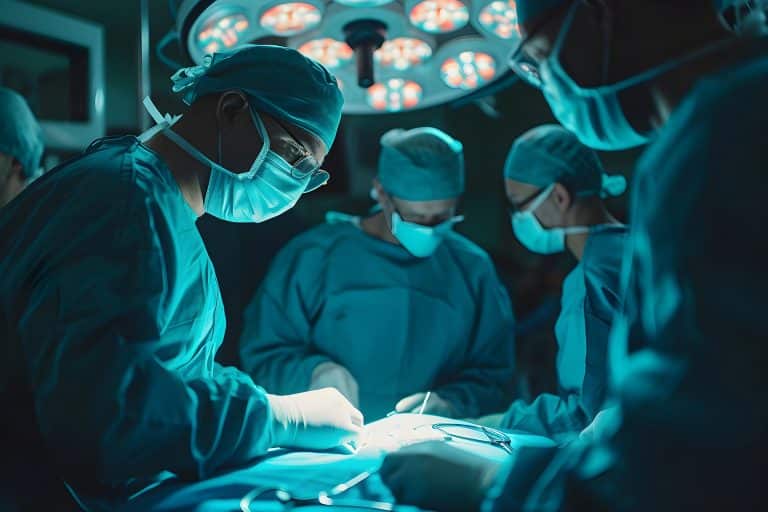The History and Evolution of the Deep Plane Facelift
No matter your age, you know you want to keep that youthful glow, even as time and motherhood leave their mark. Sure, aging is a beautiful journey, but it’s natural to seek ways to refresh your appearance.
Enter the deep plane facelift — a sophisticated facelift technique refined over the decades. From its inception in the 1960s to today’s advanced methods, the deep plane facelift provides a modern approach to facial aging to help you achieve more natural-looking, longer-lasting results.
Ready to learn more about this sought-after facial procedure? Let’s first talk about how facelifts came to be.
The Birth of Facelifts
The Egyptians were pioneers in facial procedures as far back as 3000 BCE. They were performing early versions of rhinoplasty and even addressing wrinkles.
Then there’s ancient India, where a surgeon named Sushruta performed nasal reconstructions in the 9th century BCE, giving him the prestigious title of the “father of plastic surgery.”
Fast forward to Europe in the 1700s and 1800s, where surgeons developed techniques to pull the skin up and back on the face. This was the precursor to modern facelifts.
The first facelift-like procedure was performed way back in 1901 in Germany. It was a simple skin-tightening procedure, nothing like today’s sophisticated techniques.
For decades, facelifts mainly involved just pulling back the skin, which often resulted in that dreaded “wind tunnel” look — not exactly the natural, refreshed appearance of our facelifts today.
The Road to the Deep Plane Technique
Paul Tessier, a pioneering French plastic surgeon, was crucial in advancing facial rejuvenation techniques. While he’s best known for his groundbreaking work in craniofacial surgery, his innovative approach also influenced facelift procedures.
In the 1960s, Tessier introduced the concept of deep tissue manipulation during facelifts. He emphasized the importance of addressing the underlying facial structures, not just the skin.
This revolutionary idea is the precursor of the deep plane facelift technique, which provides more natural-looking and longer-lasting results than traditional skin-only facelifts.
Tessier’s philosophy of “if it is not normal, it is not enough” pushed the boundaries of what was possible in facial plastic surgery. His work laid the foundation for modern facelift techniques that focus on repositioning deeper facial tissues, resulting in more comprehensive rejuvenation.
However, the real game changer came in the 1970s when Swedish surgeon Tord Skoog introduced the superficial musculoaponeurotic system or SMAS technique. Instead of just working on the skin, this method focuses on the deeper facial tissues and eliminates jowls without creating an overly tight appearance.
But, of course, early facelifts had their limitations. Skoog’s SMAS technique, in particular, is a more complex and time-consuming procedure that requires a highly skilled and experienced surgeon. There’s an increased risk of nerve damage due to the manipulation of deeper facial layers, potentially leading to temporary or, in rare cases, permanent changes in facial sensitivity or movement.
The surgery also typically requires general anesthesia and involves a longer recovery period compared to less invasive techniques, and results in more noticeable scars.
The Deep Plane Facelift Emerges
With all these facelift concerns, there was a need for a better approach that would create more natural-looking results. Enter the deep plane facelift — a groundbreaking technique introduced by Dr. Sam Hamra in the 1990s.
Unlike earlier facelift methods that just tightened skin, Hamra’s approach went deeper, addressing the underlying facial structures for more natural, longer-lasting results.
It works beneath the SMAS layer of tissue covering your facial muscles) to reposition the whole face as one unit. This means better lifting of the midface and improving those pesky nasolabial folds — those lines from your nose to the corners of your mouth.
The deep plane facelift got more refined in the 2000s, thanks to the following surgeons:
- Dr. Daniel Baker: Known for refining facelift techniques and contributing to the evolution of the deep plane method.
- Dr. Joel Feldman: Contributed to the understanding of facial ligaments and their role in facelifts, which is crucial for deep plane approaches.
- Dr. Timothy Marten: Has made significant contributions to the refinement and popularization of the deep plane technique, particularly in achieving natural-looking results.
- Dr. Bryan Mendelson: His work on understanding facial anatomy and fat compartments has been crucial in refining deep plane techniques.
- Dr. Andrew Jacono: Has further developed the deep plane technique, introducing modifications like the minimal access deep plane extended (MADE) facelift.
These improvements have made the deep plane facelift safer, with quicker recovery times, while still delivering those dramatic, long-lasting results we all dream of in the most subtle, natural way possible.
The Modern Deep Plane Facelift
The deep plane facelift works in the space between your facial muscles and deeper tissues, allowing for a more comprehensive lift. This approach releases key ligaments, letting your surgeon reposition your entire face as one unit for a natural, youthful look.
It has the following benefits:
- Dramatically more youthful appearance
- Natural-looking results without the “pulled” look
- Longer-lasting effects (up to 10-15 years)
- Improved definition in cheekbones, jawline, and neck
- Less skin trauma and shorter recovery time
- Boost in confidence and self-image
While it can benefit younger patients, the deep plane facelift is particularly suited for those in their 50s, 60s, and 70s who are:
- In good overall health
- Non-smokers
- Experiencing significant skin laxity, especially in the jaw and neck
- Looking to address issues like jowls, a double chin, or sunken cheeks
- Realistic about what the procedure can achieve
While recovery is quicker than traditional facelifts, you’ll still need some downtime. Most patients feel comfortable going out after about ten days, with full recovery taking 4-6 weeks.
Conclusion
From ancient Egyptian beauty treatments to today’s advanced techniques, the deep plane facelift has come a long way. This journey of innovation has given us a procedure that can truly turn back the clock, offering natural-looking results that last.
Whether you’re dealing with jowls, a double chin, or just want to refresh your look, the deep plane facelift might be your answer to aging gracefully.
Ready to explore what a deep plane facelift can do for you? Schedule a consultation at The Aesthetic Centers. Our expert team can guide you through the process, answer your questions, and help you decide if this transformative procedure is right for you.







